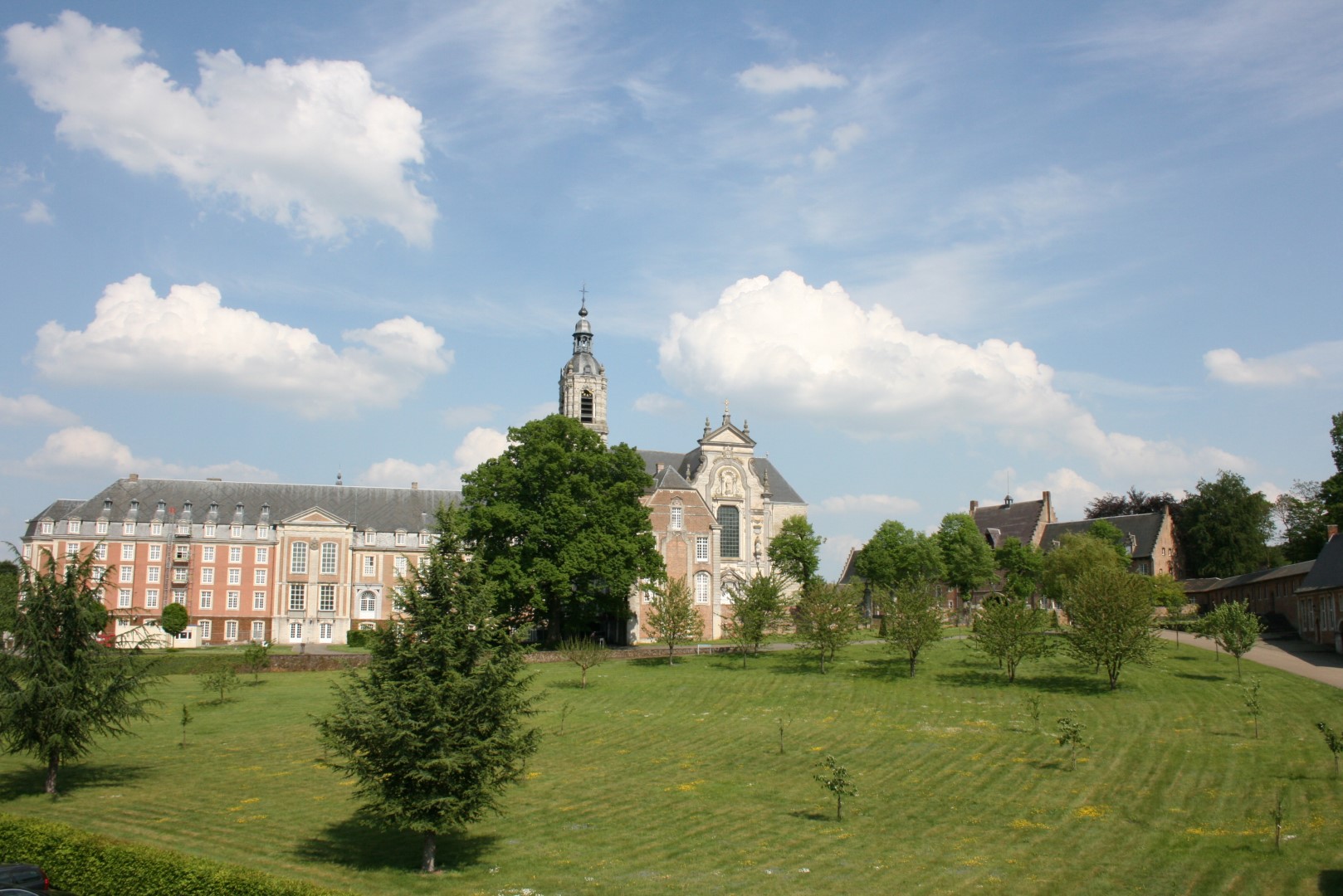- Daily & Weekly newsletters
- Buy & download The Bulletin
- Comment on our articles
King of the castles: Top heritage sites for a fine day out
FLANDERS
The little-known Ooidonk castle (pictured above) is mostly seen from the other side of the moat by people enjoying the picturesque Ooidonk walking trail in Deinze. But visitors can access both the 16th-century castle and its gardens through the gate at the northwest end of the domain. The gardens are accessible, and the castle will be open to visitors from July to November. Grab a bite to eat on the ample terrace of the Koetshuis cafe next door, in the castle’s former coach house.
Overlooking the Hoëgne, a tributary of the Vesdre river, the ruined castle of Franchimont lies 2km south of the village of Theux in Liège province. Dating from the 11th century, many elements of its military past are still standing; conservation is ongoing, as are archaeological discoveries. A medieval fair is planned on 21 & 22 August.

The newly restored Park Abbey in Leuven is celebrating this year: as the Norbertine order turns 900, visitors are invited in to explore the 12th-century abbey’s most significant spaces. Stroll through the breath-taking refectory, library and cloisters, marvel at previously hidden heritage treasures and discover how the monks used to live.

Kortenberg Abbey is only open for tours by reservation, so it’s off the radar of most travellers. But the 18th-century neoclassicist building in an idyllic garden setting at the edge of the Warande forest in Flemish Brabant is well worth seeing. It also serves as a retreat centre and hostel, with simple, inexpensive rooms.
Herkenrode Abbey in Hasselt is an impressive place, both inside and out. It’s famous for its grounds, with botanical gardens home to more than 500 species. Open to visitors, an experience centre takes you through 600 years of the religious women who lived here, while the cafe and shop sell local products.

You’ll want plenty of time to explore the Averbode Abbey site, which never stops giving. The 17th-century church is one of Belgium’s most beautiful examples of Baroque architecture, and the cafe and visitor centre one of its best examples of repurposing historical architecture. It comes with a brewery, bakery and shop for local products. This is all open six days a week, while the abbey itself can be seen during guided tours on Sundays.
Follow the tree-lined, cobblestoned path to Tongerlo Abbey to reach the 15th-century gates. Inside the vast grounds are the 19th-century neogothic church and the Da Vinci Museum, which houses the oldest replica of The Last Supper and a history of abbey life. It’s in a lovely area of Antwerp province with plenty of walking and cycling options.
WALLONIA
The ancient Abbey of Stavelot is one of the oldest monastic foundations in Belgium. Meticulously renovated, it houses museums with a series of temporary exhibitions with an international theme, and a cafe serves regional food and drink specialities. Landscaped gardens encircle this outstanding cultural, ecclesiastical and heritage site.

The fortress of Bouillon is a fairy-tale castle hewn from a rocky precipice in a bend on the Semois river in Luxembourg province. The masterpiece of medieval military architecture earned renown in the 11th century when Duke Godfrey of Bouillon joined the Crusade and became the first ruler of Jerusalem. It’s crammed with bridges, ditches, drawbridges, towers, gun turrets, dungeons and even a torture chamber. Regular activities include bird of prey displays.
One of Hainaut’s grandest castles, the Domaine du Château de Seneffe hosts major exhibitions and events, including outdoor shows of contemporary art. A permanent collection of silverware is contained within the 18th-century neoclassical building; visitors also come for the estate’s extensive landscaped gardens, pond, island and romantic bridge.
Castle ruins evoke centuries of history and are the perfect place for an afternoon ramble. Château fort du Montaigle at Falaën-Onhaye (Namur province) is also a quiet and romantic destination. Perched atop a rocky outcrop overlooking a quiet valley, the castle dates from the 10th century; archaeological digs have revealed prehistoric activities.

In the upper Meuse valley, south of Dinant, the Domaine de Freÿr in Hastière is one of the region’s outstanding heritage sites. Originating from the 14th century, the family-owned stately home resembles a mini Versailles with its gardens, maze and summer folly. It’s just undergone renovation, transforming the castle and surrounding pastures and orchards into a sustainable estate that echoes its former life.














